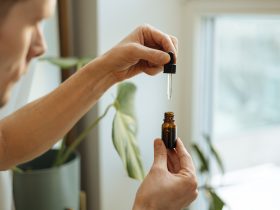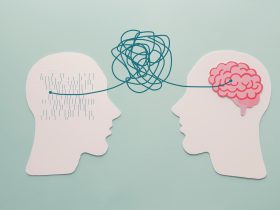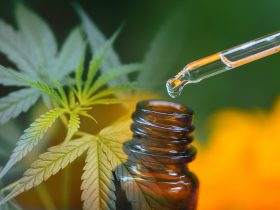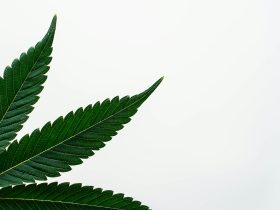Cannabidiol (CBD) often makes headlines and might be suggested as an enhancement for your post-workout shake or morning cup of coffee. You might even come across CBD-infused sportswear. But what exactly is CBD, and why is it gaining popularity?
How Does Cannabidiol Differ from Marijuana, Cannabis, and Hemp?
CBD, or cannabidiol, is the second most prevalent active compound in cannabis (marijuana). While CBD is a key element in medical marijuana, it originates from the hemp plant, which is a close relative of marijuana, or it can be created in a lab. Among the numerous compounds in marijuana, CBD doesn’t cause a “high” on its own. According to the World Health Organization, “CBD exhibits no effects indicative of any abuse or dependence potential in humans… There is no evidence of public health-related problems associated with the use of pure CBD.”
Is Cannabidiol Legal?
CBD is widely available in most parts of the United States, although its legal status has been uncertain. Every state has laws permitting CBD with varying levels of restriction. In December 2015, the FDA eased regulations to allow CBD trials. The 2018 Farm Bill legalized hemp in the U.S., effectively making it almost impossible to ban CBD – it’s like allowing oranges while prohibiting orange juice.
The Farm Bill removed all hemp-derived products, including CBD, from the Controlled Substances Act, which classifies drugs. Essentially, this means CBD is legal if it originates from hemp, but not if it comes from cannabis (marijuana) – even though it’s the same exact molecule. Many people purchase CBD online without needing a medical marijuana license, which is lawful in most states.
What Are Cannabidiol’s Health Benefits
CBD has gained attention for addressing a range of health concerns, yet the most compelling scientific evidence supports its use in treating severe childhood epilepsy disorders, such as Dravet syndrome and Lennox-Gastaut syndrome (LGS), which typically don’t respond to traditional antiseizure medications. Multiple studies have demonstrated that CBD can reduce the frequency of seizures and, in some cases, even halt them completely. The FDA has approved Epidiolex, a medication containing CBD, as the first cannabis-derived treatment for these conditions.
Animal studies and human research or self-reports also suggest that CBD might be beneficial for:
- Anxiety: Research, including clinical trials, is looking into CBD’s potential to alleviate anxiety, a common claim.
- Insomnia: Studies indicate CBD could aid both falling asleep and staying asleep.
- Chronic pain: While more human studies are necessary to validate CBD’s pain management claims, one animal study in the European Journal of Pain suggests CBD applied to the skin could alleviate arthritis-related pain and inflammation. Other research explores how CBD might help counteract challenging-to-treat inflammatory and neuropathic pain.
- Addiction: Certain conditions could lead CBD to reduce cravings for substances like tobacco and heroin, according to some human studies. Animal models of addiction also propose CBD’s potential to diminish cravings for alcohol, cannabis, opiates, and stimulants.
Is CBD Safe to Use?
CBD can lead to side effects such as nausea, fatigue, and irritability. It’s important to note that CBD can interact with liver enzymes responsible for breaking down certain medications, potentially affecting their levels in your blood. Similar to grapefruit, CBD can impact the effectiveness of certain drugs.
Higher doses of CBD might result in abnormal liver-related blood test results. This effect is also seen with non-prescription drugs like acetaminophen (Tylenol). If you’re using CBD regularly, it’s crucial to inform your doctor.
One major safety concern with CBD is its classification as a supplement rather than a medication. The FDA does not currently regulate the safety and purity of dietary supplements. This means your product might not contain the stated active ingredients at the listed dosage and could include unknown elements. Moreover, the optimal therapeutic CBD dose for specific medical conditions is still unknown.
How to Take CBD Effectively
CBD is available in various forms, such as oils, extracts, capsules, patches, vapes, and topical products for skin application. For reducing inflammation and relieving muscle and joint discomfort, using a topical CBD oil, lotion, cream, or even a bath bomb might be beneficial. Alternatively, CBD patches, tinctures, or sprays meant to be placed under the tongue can allow direct entry into the bloodstream.
In some countries, the prescription drug Sativex, containing CBD as an active ingredient, is approved for multiple sclerosis-related muscle spasticity and cancer pain. In the US, Epidiolex is approved for certain types of epilepsy and tuberous sclerosis.
In Conclusion,
Some CBD manufacturers have faced criticism for making unsupported claims, such as CBD being a cure for cancer or COVID-19, which is untrue. While more research is needed, CBD might offer a helpful, relatively safe option for addressing issues like anxiety, insomnia, and chronic pain. Due to limited conclusive human studies, effective dosages are unclear. Also, as CBD is often sold as an unregulated supplement, it’s challenging to know its exact contents.
If you’re considering CBD, ensure you buy it from a reputable source. Consult your doctor to ensure it won’t interact with your other medications.
















Find Us on Socials